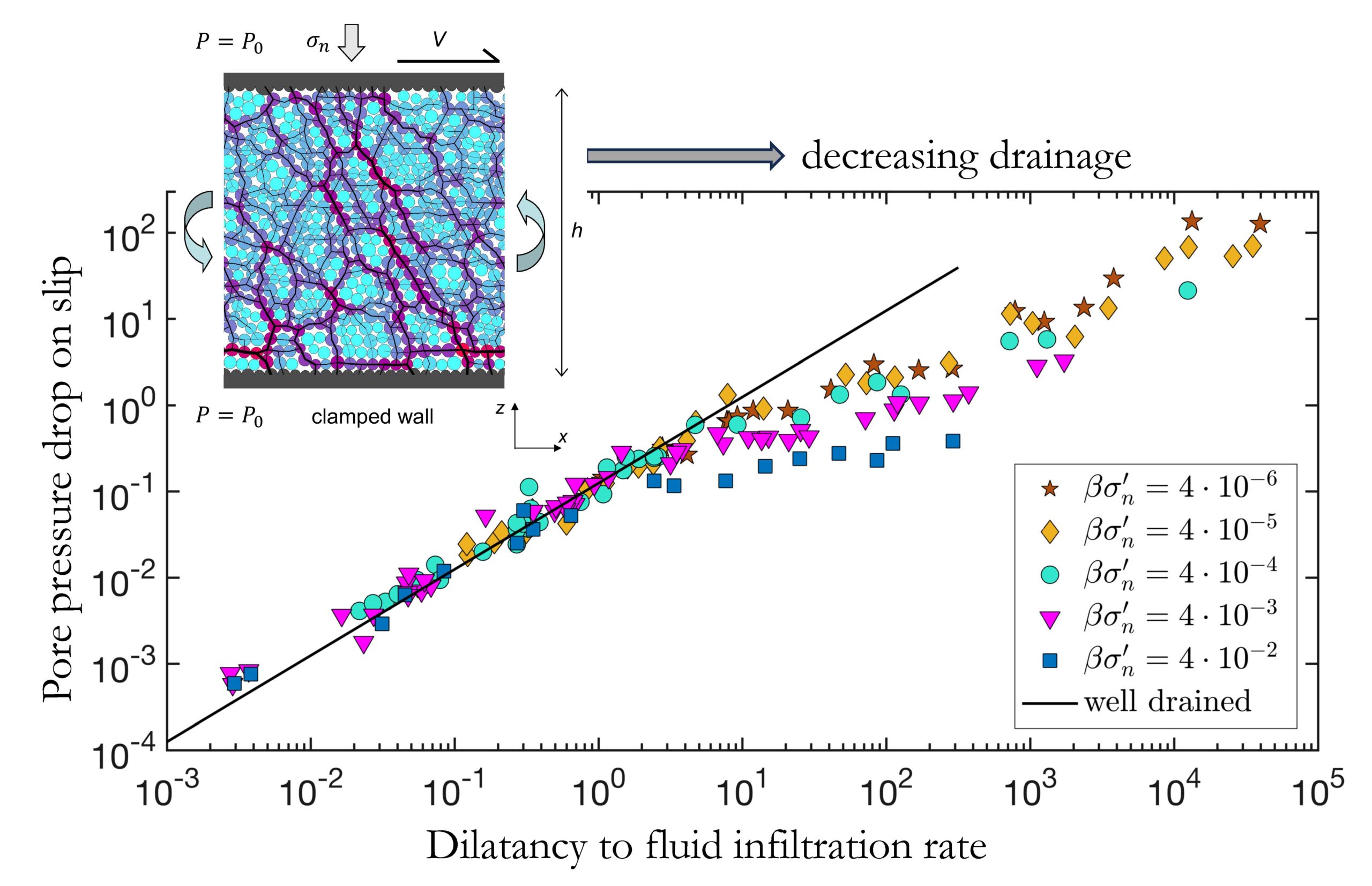Cores of geological faults are granular layers often filled with fluid, which tend to dilate on the increase in slip rate, for example, during earthquake nucleation. Dilation of the fault causes a drop in pore fluid pressure which in turn increases the strength of the fault. This effect, known as dilatancy hardening, may suppress the generation of earthquakes. However, the magnitude of fluid depressurization during dynamic slip is difficult to measure. We systematically study pore pressure drop following the onset of slip in fluid-saturated granular layers, using theory and numerical simulations. We find two regimes with distinct evolutions of pore pressure and dilatation. For slow slip rate, high permeability, or high stress acting upon the layer (drained conditions), the pore pressure drop is quickly restored and its ability to suppress earthquake nucleation is weak. Faster slip rate, lower permeability or stress (undrained conditions) lead to an enduring pore pressure drop, which significantly increases the strength of the layer. The growing magnitude of the pore pressure drop with slip rate promotes the stability of shear rupture. Our results can be used to better constrain drainage conditions associated with changes in slip rate, the magnitude of the generated pore pressure, and the corresponding fault strengthening.
- S. Parez, M. Kozakovic, J. Havlica: Pore pressure drop during dynamic rupture and conditions for dilatancy hardening. Journal of Geophysical Research: Solid Earth 2023, 128, e2023JB026396. https://doi.org/10.1029/2023JB026396
